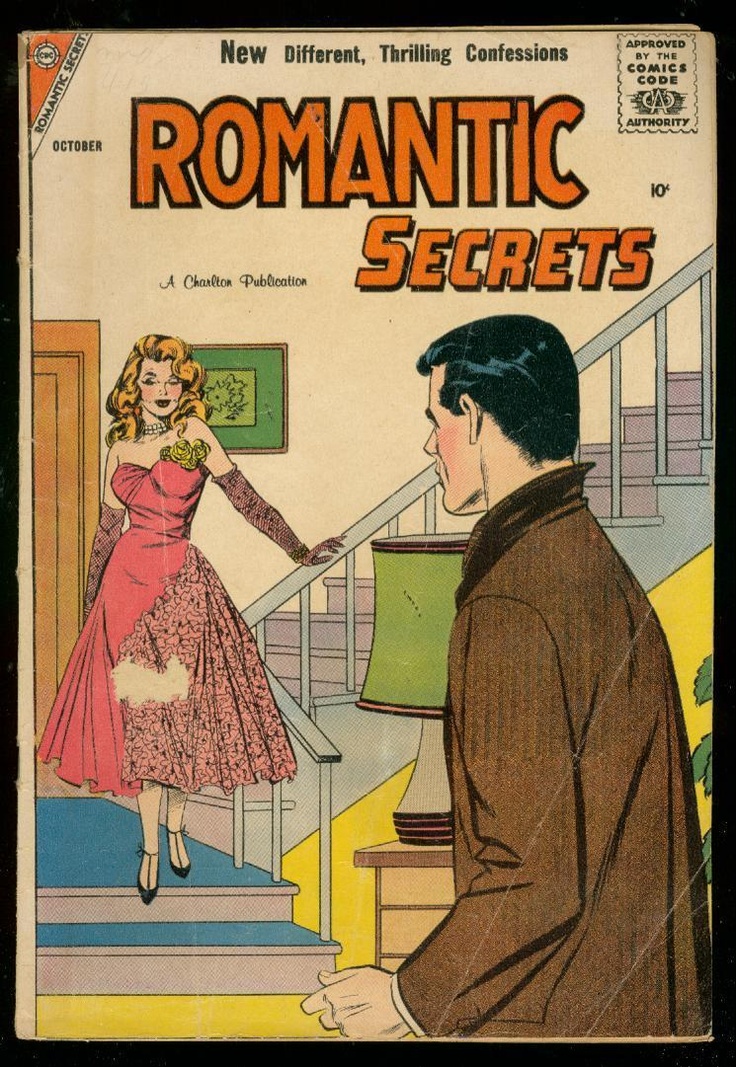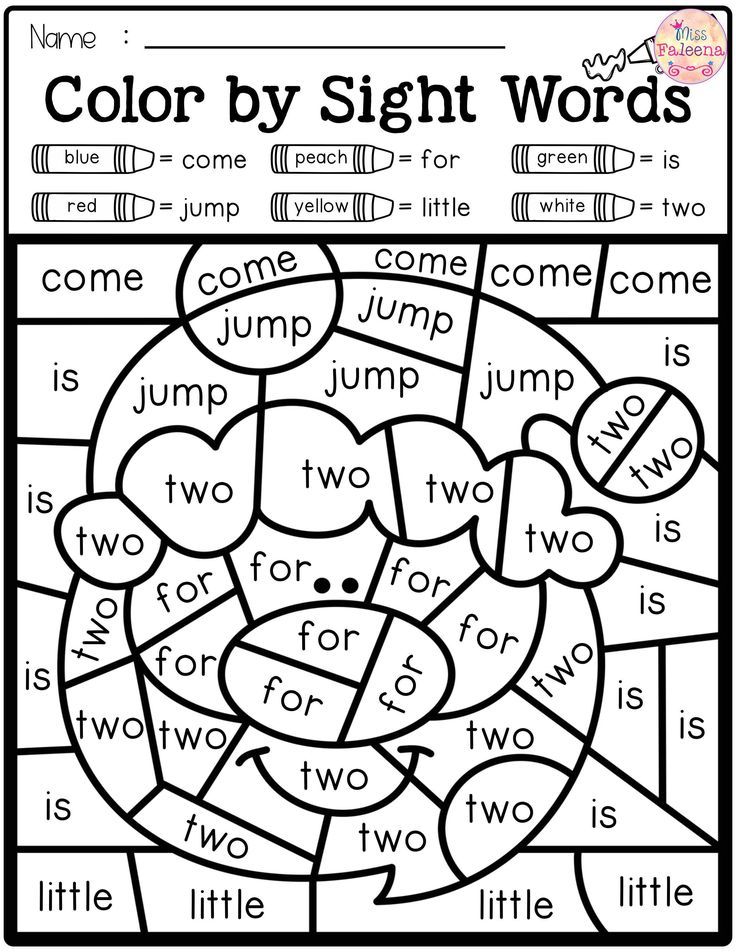The story of g
Meet the Letter G
None Gorilla, goose, golf ball… what kind of a story can you make up from these words? One that is jam-packed with words that begin with the letter G, of course. And that is what one child did – she made up a grand, goofy story that we gladly animated. The letter G has rarely had such a gleeful time! When your child is done listening, and has named some of the G words in the story, maybe they can think of their own G-filled story to tell. As a bonus, at the beginning of the video, children discover how to form both the lowercase and uppercase G. Gorilla, goose, golf ball… what kind of a story can you make up from these words? One that is jam-packed with words that begin with the letter G, of course. And that is what one child did – she made up a grand, goofy story that we gladly animated. The letter G has rarely had such a gleeful time! When your child is done listening, and has named some of the G words in the story, maybe they can think of their own G-filled story to tell.Kindergarten
Find short stories with pictures that are great for kindergarten reading level. Your child can learn about all the letters in the alphabet in the Meet The Letter series and learn to count in Monster Birthday Surprise.
view all
Meet the Letter A
Meet the Letter B
Meet the Letter C
Meet the Letter D
Meet the Letter E
Meet the Letter F
Meet the Letter G
Meet the Letter H
Meet the Letter I
Meet the Letter J
Meet the Letter K
Meet the Letter L
Meet the Letter M
Meet the Letter N
Meet the Letter O
Meet the Letter P
Meet the Letter Q
Meet the Letter R
Meet the Letter S
Meet the Letter T
Hamsters Holding Hands
Monster Music Factory
Monster Birthday Surprise
One membership, two learning apps for ages 2-8.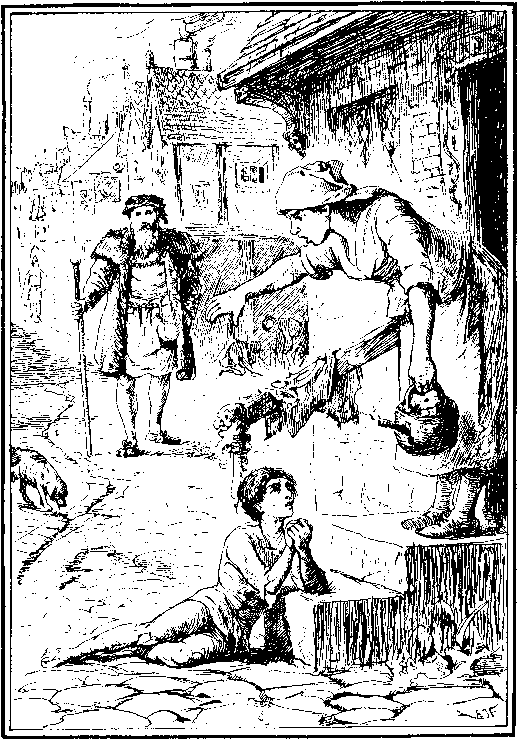
TRY IT FOR FREE
Full Text
Here is a story about the letter G. You make uppercase G like this. You make a big curve to here, then a line to here. You make a lowercase g like this. You make a circle first, and then a line down that ends with a curve. Some things what begin with G are . . . Gorilla. Goose. Golf ball. Okay, here's our story. Gage the gorilla lived in a tree. One day, he saw something fly by his tree. It was a golf ball! And then another golf ball. And then another! “Hmm. I have to do something with these golf balls!” Gage thought. Each time a golf ball would go by, Gage would grab it and glue it to his tree. Gary the goose waddled to the tree. “Excuse me. I was playing golf and hit all my golf balls this way. Have you seen them?” Gary said. Just then, Gary saw the golf balls on the tree and gasped. “Hey! I want those back!” Gage the gorilla wanted to make him happy, so he said, “Okay, I’ll give you the golf balls.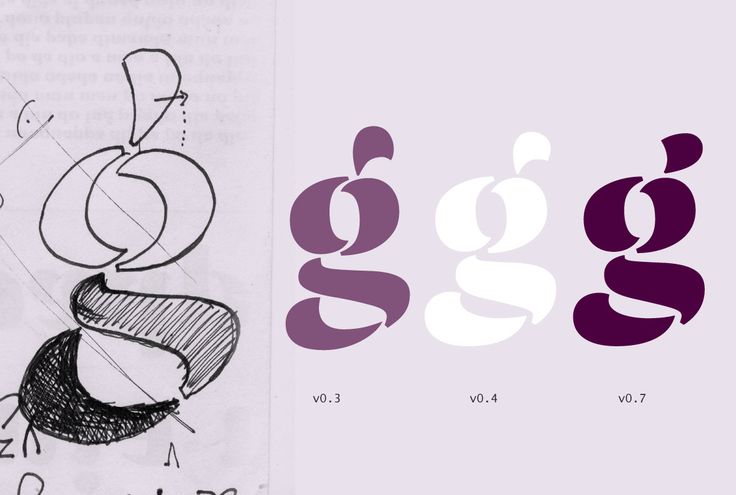 ” He pulled and pulled, but the golf balls were glued on too tight. He couldn’t do it! “Oh no!” Gary the goose said, “I have an idea! He flew up into the tree with his golf club and took a huge swing at the golf ball, and it flew off super-duper far. He did that over and over again ’til he had all of the golf balls. Then he asked Gage the gorilla to play golf with him. The End. G! What G words did you hear in the story?
” He pulled and pulled, but the golf balls were glued on too tight. He couldn’t do it! “Oh no!” Gary the goose said, “I have an idea! He flew up into the tree with his golf club and took a huge swing at the golf ball, and it flew off super-duper far. He did that over and over again ’til he had all of the golf balls. Then he asked Gage the gorilla to play golf with him. The End. G! What G words did you hear in the story?
1
We take your child's unique passions
2
Add their current reading level
3
And create a personalized learn-to-read plan
4
That teaches them to read and love reading
TRY IT FOR FREE
The G Story: About us
The G Story: About us We are an artistic styling atelier based out of Mumbai, India, that spins creative visual stories to help captivate your audiences.
We know words alone aren’t enough to narrate your brand and product story, that’s where we step in. Whether you’re trying to rise above the clutter of Instagram or communicate your brand ethos and product on your website and other ecommerce marketplaces, the right visuals can help elevate your brand. And we are here to help you do just that.
Our team takes the time to closely understand your product and brand, what it stands for and the key-message you want to deliver to your community before we build your visual story. The G Story with it’s talented young team of creative individuals, strives to narrate your story through the visual creative medium for varying platforms from digital, print to outdoor media.
She’s a painter on weekends, a photographer on holidays, a stylist on most days and an artist every day.
What started as a passion project for Gayatri Jhaveri Patel has become an extension of herself with the launch of her visual studio, The G Story.
“Sometimes, we find our calling when we least expect it and that’s exactly how things worked out for me. Having completed my formal education in visual communication & design, creating compositions has always been my forte. However, over time, taking aesthetic photographs became a part of me. Everywhere I went, I looked for inspiration, trying to transform the mundane into the extraordinary; a way to tell my story in pictures. Like everything else in life, the more I did it, the better I got at it.
You know what they say, ‘do what you love and you’ll never work a day in your life’ which is why both for my team and I, The G Story isn’t just a job or a company but a creative outlet to express ourselves and do what we love every single day.
My passion created The G Story, and we want to dedicate this chapter to you!"
She’s a painter on weekends, a photographer on holidays, a stylist on most days and an artist every day.
What started as a passion project for Gayatri Jhaveri Patel has become an extension of herself with the launch of her visual studio, The G Story.
“Sometimes, we find our calling when we least expect it and that’s exactly how things worked out for me. Having completed my formal education in visual communication & design, creating compositions has always been my forte. However, over time, taking aesthetic photographs became a part of me. Everywhere I went, I looked for inspiration, trying to transform the mundane into the extraordinary; a way to tell my story in pictures. Like everything else in life, the more I did it, the better I got at it.
You know what they say, ‘do what you love and you’ll never work a day in your life’ which is why both for my team and I, The G Story isn’t just a job or a company but a creative outlet to express ourselves and do what we love every single day.
My passion created The G Story, and we want to dedicate this chapter to you!"
Sanit Patel
COO
Anaaya Mehta
Creative Manager
Disha Sanghvi
Creative Executive
Ravindu Patil
Photographer
Aditya Ghadge
Digital Editor
Nizhny Novgorod - an ancient city, a glorious city, a young city
Nizhny Novgorod - one of the most ancient cities in Russia, the administrative center of the Volga Federal District, the fifth most populous metropolis in the country.
Nizhny Novgorod was founded in 1221 by the Grand Duke of Vladimir George (Yuri) Vsevolodovich. This is one of the few Russian cities founded by a saint.
From 1932 to 1999 the city was called Gorky in honor of the world famous writer, classic of world literature Maxim Gorky, a native of Nizhny Novgorod.
Nizhny Novgorod is located at the confluence of the two great rivers Volga and Oka.
Many world celebrities came to admire the view of Strelka, where their waters merge. And today tourists are fascinated by this majestic, incomparable view. Oka divides the city into two parts: upland, located on the right high bank on the Dyatlovy mountains, and spread out on the left lowland, extending to the Volga bank beyond the river. The Volga separates Nizhny Novgorod and the Bor District. Two ancient monasteries - the white-stone Annunciation, the same age as the city, built on the Dyatlovy mountains, and the Pechersky Voznesensky, founded in 1328-1330 by St. Dionysius of Suzdal, located on the "foothills" of the famous Starling Mountains, are real "pearls" of the city.
The stone one deserves special attention The Nizhny Novgorod Kremlin, built at the beginning of the 16th century to replace the burned-out wooden one. This medieval fortress in its entire history is the only one in Russia that has remained impregnable for the enemy. Here, at the Ivanovskaya Tower, the great citizen and patriot of the land of the Russian Zemstvo Kozma Minin raised funds and organized together with Prince Dmitry Pozharsky People's militia, which liberated Moscow from the Polish-Lithuanian invaders in 1612.
Here, at the Ivanovskaya Tower, the great citizen and patriot of the land of the Russian Zemstvo Kozma Minin raised funds and organized together with Prince Dmitry Pozharsky People's militia, which liberated Moscow from the Polish-Lithuanian invaders in 1612.
The Kremlin also played a significant role in the defense of the city of Gorky during the Great Patriotic War. Then the roofs of the Tainitskaya, North and Clock towers were dismantled and anti-aircraft machine guns were installed on the upper platforms, protecting the city from Nazi aviation. The Kremlin was seriously damaged during the war years, but thanks to the architect-restorer, architectural historian Svyatoslav Agafonov, who led its restoration, to this day it impresses the townspeople and numerous guests of Nizhny Novgorod with its monumental architecture and centuries-old glorious history.
In 1817, in Nizhny Novgorod, on the left bank of the Oka, the famous throughout Russia, the largest in the country, was transferred from the city of Makariev Makarievskaya Fair .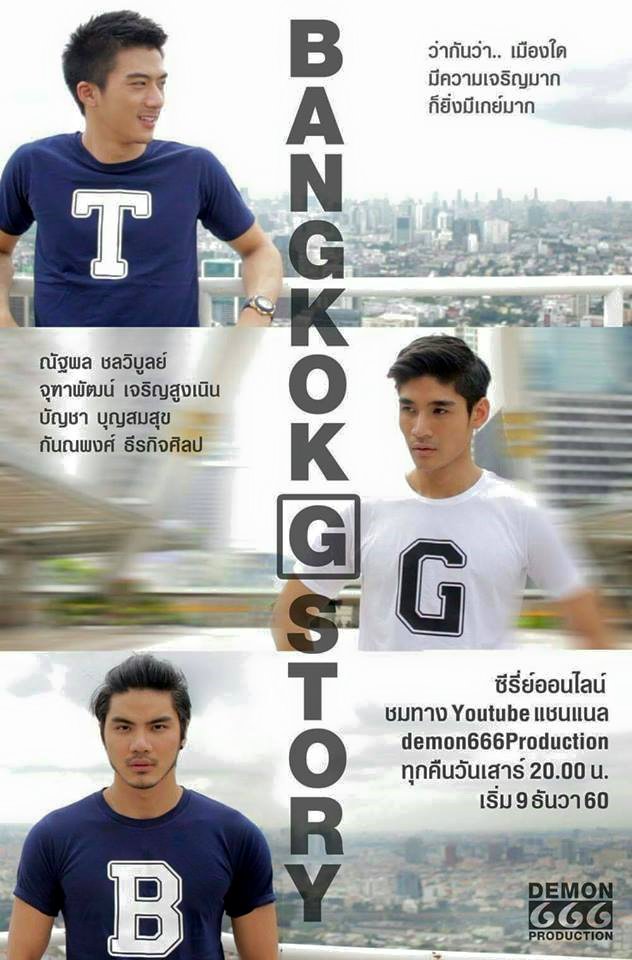 The landscaping of the area around the fair pavilions has grown into a real masterpiece of urban development, and already in 1896 the world-famous, the largest in the history of the Russian Empire World Art and Industrial Exhibition was held here. It was thanks to the Fair that Nizhny Novgorod became the real capital of the Russian merchants and received the nickname “Pocket of Russia”.
The landscaping of the area around the fair pavilions has grown into a real masterpiece of urban development, and already in 1896 the world-famous, the largest in the history of the Russian Empire World Art and Industrial Exhibition was held here. It was thanks to the Fair that Nizhny Novgorod became the real capital of the Russian merchants and received the nickname “Pocket of Russia”.
In Soviet times, the city also developed rapidly. The thirties of the XX century were marked by the rapid growth of industry. In 1932, The Gorky Automobile Plant , the largest industrial enterprise in the country, was built with the participation of Ford Motor Co. GAZ cars quickly became famous all over the world. The automobile plant, along with other industrial enterprises of the city, played a huge role during the Great Patriotic War.
To this day, Nizhny Novgorod residents are trying to achieve historical justice - the city is awarded the title of "city of labor and military glory. " The contribution of Gorky residents to the Victory in the Great Patriotic War can hardly be overestimated. More than 800 thousand inhabitants of our city fought on the fronts, and over 350 thousand of them gave their lives for the Victory. The contribution to the Victory made by the Gorky people in the rear, at the factory machines, is also huge. It was in the city of Gorky that every second car, every third tank and every fourth artillery installation was created for the needs of the front. For example, only at the Gorky Machine-Building Plant during the four war years, as many artillery pieces were produced as at all enterprises in Germany. That is why the city was regularly subjected to massive bombardments by enemy aircraft. German bombers made 43 raids, 26 of them at night. 339 were dropped on the city34 incendiary bombs and 1631 high explosive. The bombing of Gorky became the largest blows of the Luftwaffe to the rear areas of the entire Soviet Union during the war years.
" The contribution of Gorky residents to the Victory in the Great Patriotic War can hardly be overestimated. More than 800 thousand inhabitants of our city fought on the fronts, and over 350 thousand of them gave their lives for the Victory. The contribution to the Victory made by the Gorky people in the rear, at the factory machines, is also huge. It was in the city of Gorky that every second car, every third tank and every fourth artillery installation was created for the needs of the front. For example, only at the Gorky Machine-Building Plant during the four war years, as many artillery pieces were produced as at all enterprises in Germany. That is why the city was regularly subjected to massive bombardments by enemy aircraft. German bombers made 43 raids, 26 of them at night. 339 were dropped on the city34 incendiary bombs and 1631 high explosive. The bombing of Gorky became the largest blows of the Luftwaffe to the rear areas of the entire Soviet Union during the war years.
In the very center of the city to this day there is a functioning Orthodox Church of the All-Merciful Savior, on the walls of which there are traces of German bombardments.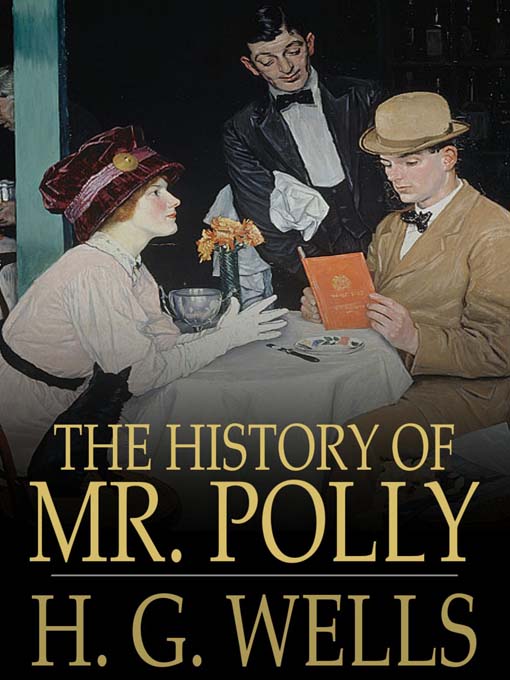 The air raid, the memory of which the church keeps, was carried out in November 1941. Here are the lines from a schoolboy's diary: “On November 13, they bombed from 5 in the morning… Three houses were bombed on Polevaya Street. People were chipped away from the rubble of burnt houses for two whole days…”
The air raid, the memory of which the church keeps, was carried out in November 1941. Here are the lines from a schoolboy's diary: “On November 13, they bombed from 5 in the morning… Three houses were bombed on Polevaya Street. People were chipped away from the rubble of burnt houses for two whole days…”
Shells were exploding in the immediate vicinity, but the building survived. In 2015, on the occasion of the 70th anniversary of the Great Victory, on the initiative of the administration of the Nizhny Novgorod region, with the support of the Nizhny Novgorod Metropolis, a memorial plaque was installed on the wall of the temple ... for foreigners.
In 1970, by the Decree of the Presidium of the Supreme Soviet of the USSR, the city of Gorky was awarded the Order of Lenin.
On October 22, 1990, the historical name of Nizhny Novgorod was returned to the city, and in 1991 the restriction on visiting by foreign tourists was lifted. Today, Nizhny Novgorod is still an important economic, industrial, scientific, educational and cultural center of Russia, one of the largest transport hubs, an important river tourism destination and a popular tourist center both in Russia and in the world.
The city has more than 600 unique historical, architectural and cultural monuments, about 200 cultural institutions, including: 14 theaters, including 3 academic ones, a philharmonic society, 5 concert halls, 97 libraries, 17 cinemas, 25 children's clubs, 8 museums, a conservatory, a digital planetarium.
On the territory of Nizhny Novgorod there are many different museums, among them: the only museum in Russia, N.A. Dobrolyubov in the former tenement house of the Dobrolyubov family, as well as a house-museum in the wing of the Dobrolyubov estate, where critics spent their childhood and youth, several museums of M. Gorky, the museum-apartment of A.D. Sakharov, Russian Museum of Photography.
Nizhny Novgorod has 8 universities, 3 academies, a conservatory and more than 5 institutes. In total, there are over 50 higher educational institutions and branches.
Institute of Philology and Journalism (IFIZh) Nizhny Novgorod State University. N.I. Lobachevsky is located in the historical center of the city on Bolshaya Pokrovskaya street - the main pedestrian tourist "trail" of the city. It is noteworthy that it was here that the first state university of the Soviet Union was located.
It is noteworthy that it was here that the first state university of the Soviet Union was located.
12 interesting facts about Nizhny Novgorod
1. The most impregnable Kremlin in Russia is located in Nizhny Novgorod. Five times in history, the invaders besieged the Kremlin, but they never managed to take it.
The thickness of the walls of the Nizhny Novgorod Kremlin is from 3.5 to 5 meters. Height - up to 22 meters. The total length is more than two kilometers. During the Great Patriotic War, anti-aircraft guns stood on the Kremlin towers.
2. In Nizhny Novgorod, the famous militia of Kozma Minin and Prince Dmitry Pozharsky was formed, which liberated Russia from the Polish-Lithuanian intervention. The Church of St. John the Baptist, from the steps of which the saviors of the Fatherland began their journey, still stands today. And in the Nizhny Novgorod Art Museum you can see one of the largest paintings in the world "The Appeal of Kozma Minin" by Konstantin Makovsky. Its size is 6 by 6 meters.
Its size is 6 by 6 meters.
3. In Nizhny Novgorod there are 2 of the 4 churches existing in the world, built in a special unique style at the expense of the merchant Grigory Stroganov - the famous "oligarch" of the time of Peter the Great. Two legends are associated with one of them, located on Rozhdestvenskaya Street. The first is very similar to the story of the blinding of Postnik and Barma after the construction of St. Basil's Cathedral in Moscow, only the name of the builder of the Nizhny Novgorod church was not preserved by popular rumor.
The second legend is connected with the icon “Almighty Savior”, painted by the serf master of the Stroganovs, Stepan Narykov. In the image of Christ, the familiar features of Grigory Stroganov were immediately discernible, and Emperor Peter I, who arrived at the consecration of the temple, saw this icon and exclaimed in anger: “What is it - I have to worship Grishka Stroganov, my serf? Let this not happen!”, and left the temple. Therefore, the Stroganov Church stood unconsecrated for several years.
4. The longest pedestrian staircase in Russia is located in Nizhny Novgorod. It got the name "Chkalovskaya", because it leads from the monument to Valery Chkalov to the Nizhnevolzhskaya embankment, on which the famous boat "Hero" is installed. The staircase is built in the shape of a figure eight and has 560 steps on both sides 442 steps from bottom to top on the right side From the Volga, the staircase looks fundamental, which is why Nizhny Novgorod residents not only organize athletics competitions on it, but also use it to create a unique art object. For example, about a thousand men from Nizhny Novgorod turned the Chkalov Stairs into a greeting card for their loved ones on March 8. The largest “live” postcard in the country was included in the Russian Book of Records in 2018.
The famous staircase was built by German prisoners of war. When they worked, people from Nizhny Novgorod brought them food and cigarettes. The second name of the stairs is “Volzhskaya”.
4.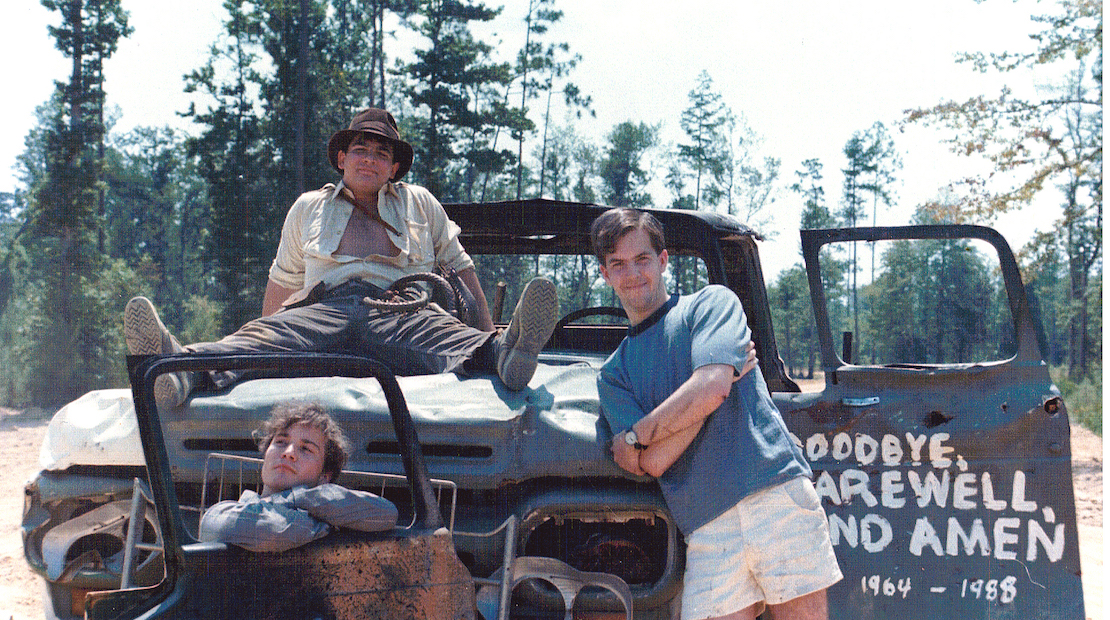 Nizhny Novgorod has the highest embankment of the Volga in Russia. It is called Upper Volga. Its height is 80 meters. On the embankment there is a model of the Newport aircraft, on which the pilot Pyotr Nesterov made the first "dead loop" during the First World War.
Nizhny Novgorod has the highest embankment of the Volga in Russia. It is called Upper Volga. Its height is 80 meters. On the embankment there is a model of the Newport aircraft, on which the pilot Pyotr Nesterov made the first "dead loop" during the First World War.
5. In Nizhny Novgorod there is the longest cable car not only in Russia, but also in all of Europe. Its length is 3362 meters. It is noteworthy that 800 meters pass above the water surface. The Nizhny Novgorod "cable car" is also an intercity vehicle connecting Nizhny Novgorod and the city of Bor, which are located on different banks of the Volga.
6. In Nizhny there is a “street of pickpockets” – Osharskaya. The street got its name because at the taverns located on it, pickpockets regularly stalked and “scrabbled” drunken revelers. Today it is a quiet street. Only the name reminds of the past.
7. The name of one of the 8 city districts - "Kanavino" comes from the phrase "Kuma, wine!". This is what lovers of alcohol said when they entered the tavern, which were also numerous in the area of the world-famous Nizhny Novgorod Fair.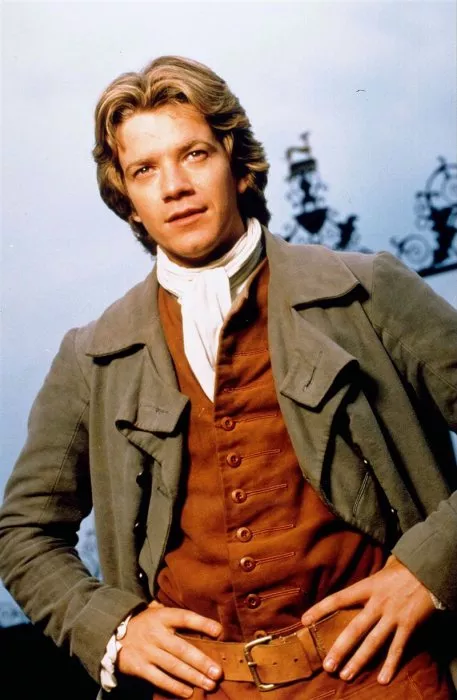
8. The name of the district “Sormovo” comes from the word “shame”, or “litter”. Five hundred years ago, "stray" people were settled there - tramps and beggars.
9. There are many memorable places in Nizhny Novgorod associated with the name of Maxim Gorky. One of them is the Bugrovs' doss house that has survived to this day, which served as a prototype for the famous doss house from the play "At the Bottom". It is noteworthy that the real life of the rooming house differed from that described in the play, so the inscription “Do not drink vodka! Do not sing a song! Be quiet!" The tramps strictly observed these requirements.
10. Nizhny Novgorod has the most modern planetarium, which is also a serious research center. The main hall of the planetarium is equipped with the Argus Planetarium projector system, the only Russian equivalent of Western projection systems. The Nizhny Novgorod Planetarium has both a digital telescope and the only spacecraft docking simulator in Russia that is available to visitors.
11. In Nizhny Novgorod, there is one of Stalin's bunkers, built at the very beginning of the Great Patriotic War, which the leader never used. The secret bomb shelter was named "Special Object N74". Its area is 1231 sq.m., 828 of which are the so-called usable area. The bunker was built in strict secrecy. The inhabitants of Nizhny Novgorod themselves only recently learned about its existence.
12. In August 2007, the first birch-bark letter and writing was discovered in Nizhny Novgorod, as well as a treasure of 14 hryvnia silver ingots from the 12th-13th centuries.
“Lower through the eyes of the classics”:
In the summer of 1870 the great artist Ilya Efimovich Repin visited Nizhny Novgorod. His words about our city later began to be used by many writers, journalists, travelers as an epigraph to their memoirs: “ This city, royally placed over the entire east of Russia, completely turned our heads. How delightful are its boundless distances! We choked with admiration for them, and before our eyes stood the living history of Russia, whose people, these strong people of good nature, were so able to appreciate life, its warmth and artistry. These did not like to settle somewhere and somehow ... »
Nizhny Novgorod is the birthplace of the world-famous publicist, critic, poet Nikolai Alexandrovich Dobrolyubov , who wrote such beautiful lines:
Dear city!.. How I know everything
On your narrow streets!
How much these houses awaken
Memories dear to the heart!0004 in his book “The Great River” he admired Nizhny Novgorod: “ Hardly any other Russian city can boast of such a wide panorama, such extraordinarily beautiful views as Nizhny. At least, I just froze, stopping at the edge of the slope ... Before me, at a vast distance, the distance of the opposite bank of the Volga suddenly unfolded ... Its waters had just entered the banks; and all this green soft low ground sparkled with dashes, shields and bends of spills still remaining in it. Under the brilliance of the sunset, the edges of these shields turned golden, and where the lower itself was no longer visible, it merged into one impenetrable blue . .. At first, you don’t know where to look, what to stop at. It’s a pity to break away from these blue distances, I want to see, right below me, small steamers, Mokshans and Belyans, moored to the shore ... »
All his life, our famous fellow countryman, writer Maxim Gorky (Alexei Maksimovich Peshkov) kept in his heart love for his native city. In one of his letters to St. Petersburg to Anton Pavlovich Chekhov, he remarked: “ You, in your foggy city, cannot see how quickly life goes forward, cannot see how a person grows and his spirit grows stronger and self-esteem rises in him. Here it is clearer. And how glad I am that I live here, and that you are there - it's a pity ".
And here is what the great writer wrote Alexander Sergeevich Pushkin – “the sun of Russian poetry”:
From Onegin’s Journey
IX
Longing, longing! He wants to go to Nizhny,
To Minin's homeland. Before him
Before him
Makariev busily busies himself,
Boils with his abundance.
An Indian brought pearls here,
Fake European wine,0009
The breeder brought from the steppes,
The player brought his decks
And a handful of helpful bones,
The landowner - ripe daughters,
- days of fashion A.
Everyone fusses, lies for two,
And everywhere the mercantile spirit.
Count Vladimir Alexandrovich Sollogub , prose writer, playwright, poet and memoirist noted in his story “Tarantas”:
“ At first, your whole being will seem to expand, and your existence will become clearer to you from one glance at the luxurious picture of the Volga coast. To the left at your feet, under a terrible steepness, you will see a wide mother river, beloved by the people, glorified by songs and beliefs; proudly she plays and shines with silver scales and smoothly and majestically stretches into the bluish distance.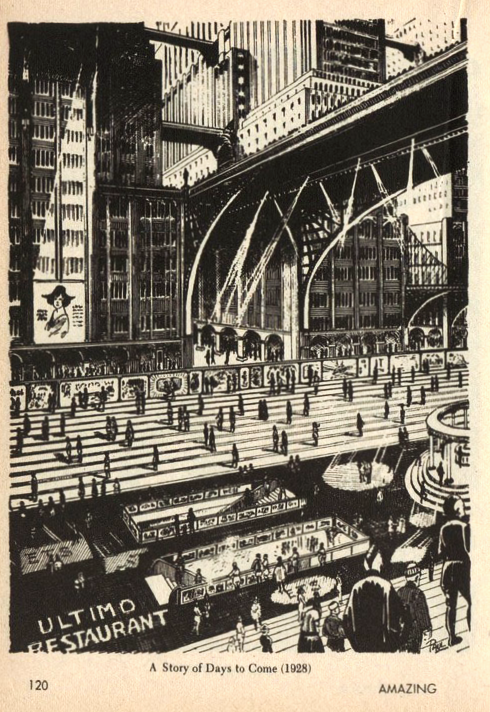 To the right, on the slope of the mountain, picturesque huts are piled up in a friendly heap between bushes and trees, and above them, on a cliff that goes into the river, you will see a white mite of a monastery fence, among which rise the domes of churches and the cells of monks .... On the other side, on a mountainous bank the ancient Kremlin rises, and the scaly bell towers stand high in the blue sky, and the whole city leans and stretches towards the Volga slope. On the other, the meadow side, the gaze encompasses an boundless space dotted with villages and irrigated by the mighty currents of the Oka and Volga, which mix their multi-colored waters at the very foot of the city and, mixing, form a cape on which the world-famous fair boils and rages: at this place Asia collides with Europe, the East with the West ... There are ships of all kinds, from all over Russia, with products of distant China, with their own plentiful bread, with a full load, waiting only for an exchange to go either to the Caspian Sea or to insatiable Petersburg.
To the right, on the slope of the mountain, picturesque huts are piled up in a friendly heap between bushes and trees, and above them, on a cliff that goes into the river, you will see a white mite of a monastery fence, among which rise the domes of churches and the cells of monks .... On the other side, on a mountainous bank the ancient Kremlin rises, and the scaly bell towers stand high in the blue sky, and the whole city leans and stretches towards the Volga slope. On the other, the meadow side, the gaze encompasses an boundless space dotted with villages and irrigated by the mighty currents of the Oka and Volga, which mix their multi-colored waters at the very foot of the city and, mixing, form a cape on which the world-famous fair boils and rages: at this place Asia collides with Europe, the East with the West ... There are ships of all kinds, from all over Russia, with products of distant China, with their own plentiful bread, with a full load, waiting only for an exchange to go either to the Caspian Sea or to insatiable Petersburg. What a picture and what a contrast! ”
What a picture and what a contrast! ”
Nizhny Novgorod conquered many foreign celebrities who visited the city in different years.
The American writer Theodore Dreiser , who was visiting the city in December 1927, wrote: “... Nizhny Novgorod, in my opinion, is one of the most attractive and interesting cities that I have seen in Russia. I like it because it has the Volga, because it is not as flat as Moscow or Leningrad, because it has the same picturesque type of Russian buildings - and with all these purely Russian attractive features, it seems to me quite modern, noisy, lively atmosphere of an American city. ”
French writer, critic and publicist Théophile Gauthier came to Nizhny Novgorod in 1861. He outlined his impressions in the book “Journey to Russia”, part of “Volga. From Tver to Nizhny Novgorod”: “ Is it possible to live without seeing Nizhny Novgorod?” “Nizhny Novgorod has long evoked such an irresistible attraction in me. No melody resonated so sweetly in my ears as this distant and indefinite title. I repeated it like a prayer, almost without realizing it, and with a feeling of inexpressible pleasure I looked out for the city on the maps.0009".
No melody resonated so sweetly in my ears as this distant and indefinite title. I repeated it like a prayer, almost without realizing it, and with a feeling of inexpressible pleasure I looked out for the city on the maps.0009".
And here is how the author of The Three Musketeers, The Count of Monte Cristo, the ruler of the thoughts of children and adolescents of all times and peoples, spoke about the city Alexandre Dumas, father : the eyes of the picture. We were at the confluence of the Volga and the Oka, in front of us below was the huge territory of the fair .
Well-known French publicist, author of the pamphlet “Russia in 1839” Marquis Adolf De Custine wrote about Nizhny Novgorod as follows:
“ The location of Nizhny Novgorod is the most beautiful I have ever seen in Russia. This is the place from which to paint a picture; so far in Russia, I have admired picturesque views only on the streets of Moscow and on St. Petersburg embankments, and these views are created by man, but here the area is beautiful in itself ... hills are undulating elevations of the soil, and here the mountain is a real mountain, protruding as a high cape at the confluence of the Volga and Oka - two equally majestic rivers ".
Petersburg embankments, and these views are created by man, but here the area is beautiful in itself ... hills are undulating elevations of the soil, and here the mountain is a real mountain, protruding as a high cape at the confluence of the Volga and Oka - two equally majestic rivers ".
history of the city, summary, milestones
The main city of the Volga Federal District - Nizhny Novgorod, is one of the oldest Russian cities with an original history. It arose in the interfluve of the Volga and Oka at the beginning of 13th century . The interfluve location gives the city a surprisingly picturesque originality and originality. This is one of the most beautiful Volga cities.
Summary:
- Foundation of the fortress
- Troubled Times
- Development of the city in the 18th and 19th centuries
- Events of the 20th century
Nizhny Novgorod residents love their city very much and are proud of its history and achievements.![]() A. Pushkin and A. Dumas, Peter the Great and Catherine the Second walked along the streets of the city. Here lived the inventor I. Kulibin , the Decembrist Annenkov and his wife, the composer Balakirev, V. Belinsky and V. Chkalov , and, of course, this is the city of the great Russian writer M. Gorky .
A. Pushkin and A. Dumas, Peter the Great and Catherine the Second walked along the streets of the city. Here lived the inventor I. Kulibin , the Decembrist Annenkov and his wife, the composer Balakirev, V. Belinsky and V. Chkalov , and, of course, this is the city of the great Russian writer M. Gorky .
View from the Nizhny Novgorod Kremlin at the confluence of the Volga and Oka
In many positions, Nizhny Novgorod holds the palm. Here, for the first time in the world, the operation of radio invented by Popov was demonstrated, the first tram in Russia was launched, the first Soviet university was opened, the first open-hearth furnace in the country was launched.
Monument to M. Gorky - the most honored citizen of Nizhny Novgorod
The first Soviet tank, the first car "Chaika" , left the Nizhny Novgorod plant, the first fighter "Mig-19" took off and the first hydrofoil boat set sail. Even the first video recorder and the first electric kettle in the country appeared in the Nizhny Novgorod factory laboratories!
Even the first video recorder and the first electric kettle in the country appeared in the Nizhny Novgorod factory laboratories!
Rare cars of the Gorky Automobile Plant
And the formation of Nizhny Novgorod began in distant, distant times ...
Foundation of the fortress
The fortified city of Nizhny Novgorod appeared on the Russian map as a stronghold for the Moscow troops in the fight against the Volga Bulgaria. It was founded by one of the numerous sons of Vsevolod the Big Nest - Prince Yuri in 1220 in the place of constant gathering of Russian troops for united actions against Bulgaria. After one of these trips Yuri (Georgy) Vsevolodovich and decided to establish a fortified point-fortress in the interfluve of the Volga and Oka.
Inscription on the Monument to the Founders of Nizhny Novgorod
The name of the new town was most likely due to its lower location along the Volga, relative to other cities.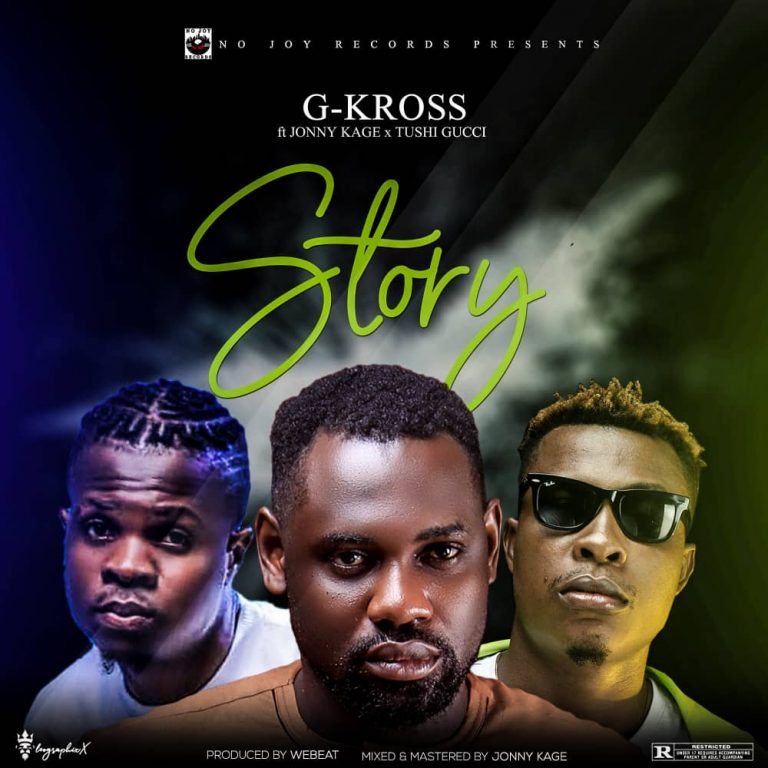 After the founding of Nizhny Novgorod, a more active intervention of Russians and their influence in the development of the Mordovian and other nationalities living nearby began.
After the founding of Nizhny Novgorod, a more active intervention of Russians and their influence in the development of the Mordovian and other nationalities living nearby began.
The chosen location on Clock Hill was very convenient from a strategic point of view. Almost immediately, Orthodox white-stone churches were erected in this fortress, one of which was the predecessor of the current Church of the Archangel Michael in the Nizhny Novgorod Kremlin.
The Church of the Archangel Michael was installed in the place of the first fortress church
Like all Russian cities of that period, the fortress city often became the object of attack from of the Golden Horde , and later of the Kazan Khanate . During the period of internal internecine squabbles, Nizhny Novgorod belonged either to Gorodetsky , then to Vladimirsky , then to the Moscow, then to the Suzdal principality. And a few years in the early 60s. 14th century Nizhny was even the capital of one of them - Vladimir-Suzdal .
14th century Nizhny was even the capital of one of them - Vladimir-Suzdal .
In the middle of of the 15th century the city was finally fixed on the territory of the Moscow principality and served as a border town for the formation of detachments to fight the Kazan Khanate. Early 16th century powerful walls and towers of the Nizhny Novgorod Kremlin are erected.
Dmitrievskaya Tower of the Nizhny Novgorod Kremlin
After the accession of Kazan to the Russian state, which occurred as a result of the third Kazan campaign Ivan the Terrible in 1552 , the border function of the city is lost.
Troubled times
And Nizhny Novgorod would have developed further within the borders of the Russian state slowly and imperceptibly for history, but the Time of Troubles, terrible for Russia, came when the fate of the country, the fate of the Russian throne, was decided.
And times were really hard. The whole country was under the rule of the Poles. The Trinity-Sergius Lavra, the Ipatiev Monastery near Kostroma and Nizhny Novgorod were kept! Zemsky headman Kuzma Minin actively urged the population of the city to fight against the Polish invaders, and his call was heard. Nizhny becomes an active center for the formation of the second People's Militia.
The whole country was under the rule of the Poles. The Trinity-Sergius Lavra, the Ipatiev Monastery near Kostroma and Nizhny Novgorod were kept! Zemsky headman Kuzma Minin actively urged the population of the city to fight against the Polish invaders, and his call was heard. Nizhny becomes an active center for the formation of the second People's Militia.
Kuzma Minin is raising funds to equip the People's Militia
The absence of enemy troops in the city made it possible to launch active fundraising activities for its creation. And the Nizhny Novgorod troops were headed by the prince respected by the people D. Pozharsky .
The people's militia of Nizhny Novgorod went to the aid of Moscow, liberating many Russian settlements along the way. For several months, the militia stopped at the Transfiguration Monastery of the Savior in Yaroslavl, gathering forces for a decisive offensive, and, ultimately, were able to liberate all of Russia.
The Polish invaders were expelled from Moscow November 4, 1612 , this day was later proclaimed the day of the Icon of Our Lady of Kazan . Since 2005 - this is the Holiday of the Day of National Unity . It is in honor of this holiday that one of the Nizhny Novgorod squares is named, on which the Monument to Minin and Pozharsky stands.
Monument to Minin and Pozharsky on National Unity Square
Development of the city in the 18th and 19th centuries
Nizhny Novgorod, like all other Russian cities, was built up spontaneously and spontaneously , although at the beginning of the 18th century it was already the center of the province. Only thanks to the activities of Catherine the Second , which introduced the mandatory drawing up of regular plans for urban construction, by the end of the 18th century, a systematic reconstruction and redevelopment of cities, the construction of stone houses in it, began.
Proximity to Moscow had a positive effect on the development of Nizhny Novgorod. And in 1812 the city almost became the Russian capital! After all, after the famous Moscow fire set by the French invaders, most of the wealthy Muscovites moved to Nizhny Novgorod.
The new accelerated development of the city began from 1817 , when the largest Russian Makarievskaya Fair, now called Nizhny Novgorod Fair, was transferred to the nearby village of Kunavino on the Nizhny Novgorod Spit!
The main building of the Nizhny Novgorod fair today
The region's economy began to develop at an unprecedented pace. Industrial enterprises were built, private and tenement houses grew, new streets and boulevards appeared, water supply began to work, the first theater in the city was opened.
The oldest drama theater in Nizhny Novgorod
In the middle of the 19th century, the largest Sormovsky plant , specializing in the production of large machines, steamships, railway cars, trams and more. Thanks to this enterprise, the city received a railway line that connected it with Moscow and Kazan.
Thanks to this enterprise, the city received a railway line that connected it with Moscow and Kazan.
The end of the 19th century will forever remain in history as the year of the First All-Russian Trade and Industrial Exhibition in Nizhny Novgorod, where advanced technical achievements were presented: the firstborn of the Russian automotive industry, Popov's radio receiver, hyperboloid tower, etc.
Events of the 20th century
Thanks to the presence of powerful industrial enterprises, where a huge number of workers were concentrated, Nizhny Novgorod (in particular, Sormovsky district ) was at the forefront of all Russian revolutionary uprisings.
The establishment of Soviet power changes the city in many aspects, and since 1932 in honor of the proletarian writer it becomes the city Gorky . The industrial and technical development of the city continues at a powerful pace. New railway bridge across the Volga established a transport link between central Russia and the Urals with Siberia. The production of domestically produced cars began at the Gorky Automobile Plant. A river port for cargo ships and a river station for passenger river transport are being built.
The production of domestically produced cars began at the Gorky Automobile Plant. A river port for cargo ships and a river station for passenger river transport are being built.
River station in Nizhny Novgorod at the foot of the ancient Kremlin
During the Second World War, as in the Time of Troubles, Nizhny Novgorod formed battalions of the People's Militia and military units. And the Gorky factories have mastered the production of military equipment. Thousands of artillery mounts were sent to the front, tanks , armored vehicles , aircraft and others.
After the war, new models of cars and trucks began to come out of the GAZ workshops. At the end of the fifties, the presence of numerous enterprises working for the defense industry leads to the fact that Nizhny Novgorod closes for visiting by foreigners.
Nizhny Novgorod "closed" city. 50-60 years of the 20th century
AT 1990s In the 20th century, the city returns to its historical name and the 'closed' label is removed.